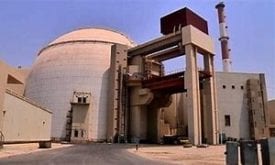Radiofarda – The Tehran Stock Exchange has seen significant drops in its two latest sessions on February 2 and 3 due to deteriorating exports resulting from U.S. sanctions.
The United States re-imposed financial sanctions on Iran last August followed by additional sanctions on crude oil exports in November, which led to drops in both oil and non-oil exports. Iran’s crude oil exports declined from 2.2 million barrels per day (mb/d) last February to a little more than the current 1 mb/d.
The Tehran Stock Exchange (TSE) main index declined 440 points day-to-day on Feb.2 and 2500 points on February 3 (1.56%).
Detailed numbers released on TSE’s official website indicate that the drop was mainly in shares of steel, petrochemical companies and Bank Mellat.
Bank Mellat, which was hit by U.S. sanctions in September 2018, recently released a report, saying that its cumulative losses have reached 8,550 billion rials ($77.7 million based on current USD rate in open markets) in late-2018, compared with the same period last year.
The industrial sector is a major player in Tehran’s stock market and market indicators show that the main index fluctuations have been exactly in line with the changes in share value of industrial companies.
Petrochemical and steel sectors
Both petrochemical and steel sectors are export-oriented industries in Iran. During nine months of current Iranian fiscal year (March 21-December 21, 2018), Iran’s petrochemical and steel exports increased 31 percent and 37 percent respectively, but the volumes started to decline recently, mostly due to sanctions.
For instance, according to figures from Iran’s customs, petrochemical exports during December 21-January 22 decreased by one third to $875 million, compared with the previous month or even the 9-month average.
Petrochemical products constitute a third of non-oil exports, while iron, steel and cast iron shares together form 9 percent of total non-oil exports.
During the first nine months of current fiscal year, Iran exported $3.071 billion of iron and its major alloys (steel and cast iron), while total non-oil exports was $33.35 billion. Iran hasn’t released iron, steel and cast iron exports values for the tenth month (December 22, 2018-January 22, 2019), but recently Iranian Steel Producers Association warned that U.S. sanctions greatly damaged those exports.
On the other hand, the Iranian government increased gas prices for steel companies on February 2 by 95% to 2,600 rials (23.6 cents based on open market rates) per one cubic meter.
Increasing gas price for this sector immediately affected the companies’ shares on the stock market.
Major companies that pushed the stock exchange main index down during February 3:
| Steel companies, Banks | Change day-to-day | Petrochemicals, refineries | Change day-to-day |
|---|---|---|---|
| Mobarakeh Steel | -6.19% | Parsian Oil and Gas Group | -3.17% |
| Esfahan Steel | -5.81% | Bandar Abbas refinery | -1.74% |
| Gohar Zamin Iron Ore | -3.89% | Jam petrochemicals | -3.17% |
| Middle East Mines & Mineral Industries Development | -3.45% | Tamin petrochemicals | -3.17% |
| Gol-E-Gohar Iron Ore | -2.35% | Zagros petrochemicals | -6.19% |
| Bank Mellat | -2.49% | Maroon | -3.45% |
A glance at Tehran Stock Exchange trends
Figures indicate that the currency exchange rate has had a major role in Tehran Stock Exchange main index.
As the U.S. dollar began to rise against Iran’s rial around March 2018, the stock market began to bubble up. The reason is that exporters selling their products for dollars get a higher return in local currency, attracting share buyers.
The U.S. withdrawal from the nuclear deal in May 2018 accelerated the rise of the dollar and the stock market until September. Then government and central bank interventions restored some of rial’s losses leading to the decline of share prices.
Not only the stock market moves to a large extent by expected profits of exporters but it also acts as a safe haven from devaluation of the local currency.
Some experts have also warned about a bubble in the stock market. They argue that the rapid rise in the stock market is not normal, while GDP growth (at market prices, based on Iranian rials) has decreased by 1.6% in 2018 and expected to further decline by 3.6% in 2019.
The International Monetary Fund has also estimated that Iran’s GDP (at current US dollar rate) would be around $430 billion in 2018, but would plunge to $333 billion in 2019.

Dim Economic Prospects As Islamic Republic Tries To Save Face On 40th Anniversary
 Shabtabnews In this dark night, I have lost my way – Arise from a corner, oh you the star of guidance.
Shabtabnews In this dark night, I have lost my way – Arise from a corner, oh you the star of guidance.




